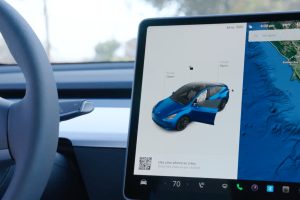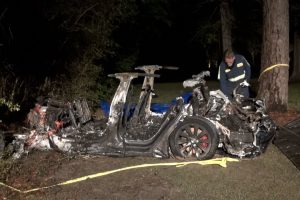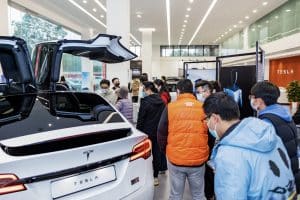- 🚗 Tesla has addressed cable concerns for NACS Supercharger sites.
- 🔌 NACS Supercharger sites are now open to Ford F-150 Lightning and Mustang Mach-E drivers.
- ⚡ Rivian, General Motors, Volvo, and Polestar owners will gain access to Tesla’s NACS Supercharger next month.
- 🤔 Tesla owners have concerns about how other EV brands, like Ford, would use Supercharger stalls due to their short cables.
- 🚧 Non-Tesla EVs might have to park over the line at Supercharger stations to comfortably charge.
- 🛠️ Tesla is rapidly deploying V4 Supercharger posts that reach all EVs in the same stall.
- 💡 Tesla encourages vehicle manufacturers to standardize charge port locations to improve compatibility.
Electric vehicles (EVs) have been gaining popularity, and with that, the demand for efficient charging infrastructure has surged. One key player in this arena is Tesla, known for its Supercharger network, which has become a cornerstone for many EV owners. However, concerns arose regarding cable compatibility at NACS Supercharger sites, particularly for non-Tesla EVs. In this blog post, we’ll delve into Tesla’s response to these concerns and the implications for the EV charging landscape.
Understanding the Concerns
Tesla’s Supercharger network has been a pivotal aspect of EV adoption, offering fast and convenient charging options for Tesla owners. However, with the emergence of other EV brands like Ford, Rivian, General Motors, Volvo, and Polestar, questions arose about the compatibility of their vehicles with Tesla’s Supercharger infrastructure. The main issue stemmed from the shorter cables used by these non-Tesla EVs and the placement of their charging ports.
Tesla’s Solution
Tesla swiftly addressed these concerns by announcing that NACS Supercharger sites are now open to Ford F-150 Lightning and Mustang Mach-E drivers, with access for other brands coming soon. To ensure compatibility, Tesla is rapidly deploying V4 Supercharger posts capable of reaching all EVs in the same stall. This proactive approach demonstrates Tesla’s commitment to fostering a more inclusive and accessible charging infrastructure.

Implications for EV Owners
Benefits:
- Increased Accessibility: Opening NACS Supercharger sites to a wider range of EV brands enhances accessibility for all drivers, promoting EV adoption.
- Efficient Charging: The deployment of V4 Supercharger posts ensures that all EVs can utilize the charging infrastructure without compromising on speed or convenience.
Challenges:
- Space Constraints: Non-Tesla EVs may need to park over the line at Supercharger stations to accommodate their shorter cables, potentially leading to space constraints and inconvenience for other drivers.
- Standardization Issues: Tesla’s encouragement for vehicle manufacturers to standardize charge port locations highlights the need for industry-wide collaboration and standardization efforts.
The Future of EV Charging
Tesla’s response to cable concerns at NACS Supercharger sites exemplifies the evolving landscape of EV charging infrastructure. As the industry continues to grow and diversify, collaboration among manufacturers and infrastructure providers will be crucial for ensuring seamless interoperability and user experience. Standardization efforts, like those advocated by Tesla, can pave the way for a more cohesive and efficient EV charging ecosystem.
Conclusion
In conclusion, Tesla’s proactive approach to addressing cable concerns at NACS Supercharger sites marks a significant step towards enhancing the accessibility and interoperability of EV charging infrastructure. By embracing innovation and collaboration, the EV industry can overcome challenges and accelerate the transition towards sustainable transportation.





